How to choose a mountain bottle / canteen

Choosing a mountain bottle or canteen seems like an easy task and, in truth, it is quite simple, but it is not just a matter of choosing the first one. We will now take a look at the main types that exist and some details to take into account.
Why use a reusable bottle on our excursions?
As can be guessed, one of the main motives is to avoid the production of waste, especially single-use packaging, and to curb the severe the problem of microplastics that so seriously affects the environment.
From a health point of view, the problem with reusing a single-use PET (Polyethylene Terephthalate) plastic bottle is not so much that it releases micro-particles of plastic but that, over time and under certain conditions, it could accumulate bacteria that could pose a health risk (source: damn.co.uk). It is very important how clean the bottle.
On the other hand, if you prefer to look at it from an economic point of view, using a reusable container is profitable in the short to medium term if you go out in the mountains.
What to consider when choosing a water bottle.
Type of material:
This is the main characteristic. They are usually made of plastic (various types), aluminium or steel. We will leave this section for the end.
Cap:
It is usually made of plastic, regardless of whether the body of the bottle is made of another material. A tip is to choose a bottle in which the cap is attached to the body of the canteen when unscrewing it. You wouldn't be the first person to have the stopper slip out of your hands and end up lost in a hole between large blocks of granite :).
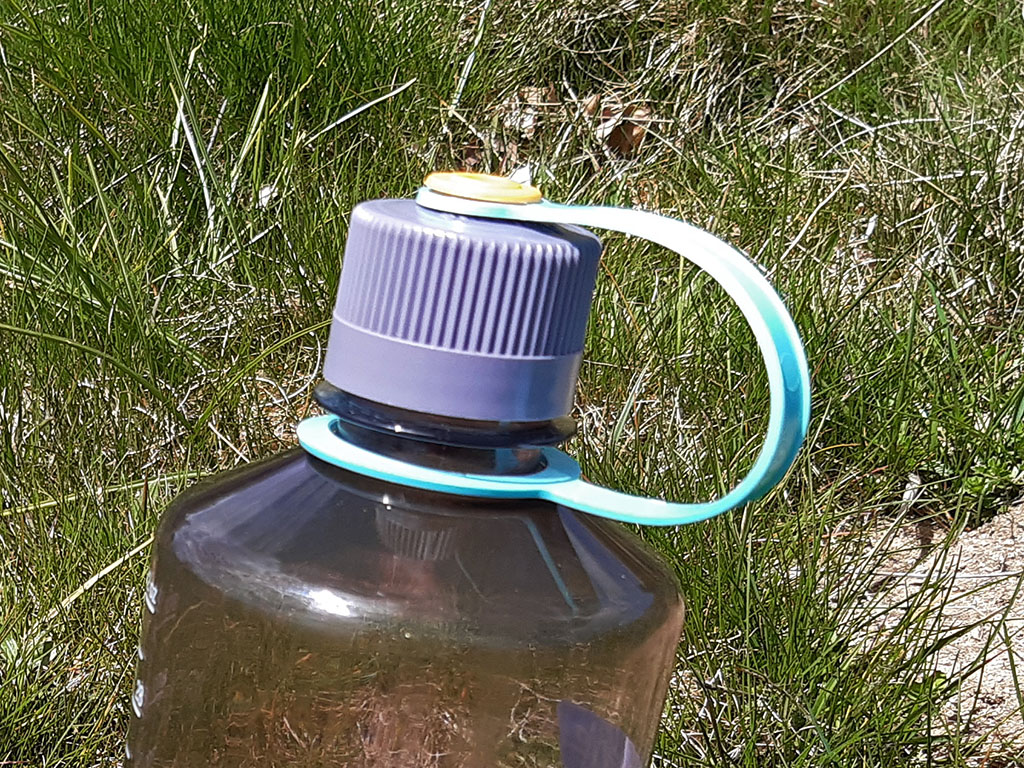
Mouthpiece:
Some models have a quick-opening system in the style of a cycling bottle or similar. Very practical for drinking without having to stop to unscrew the cap, requiring both hands.
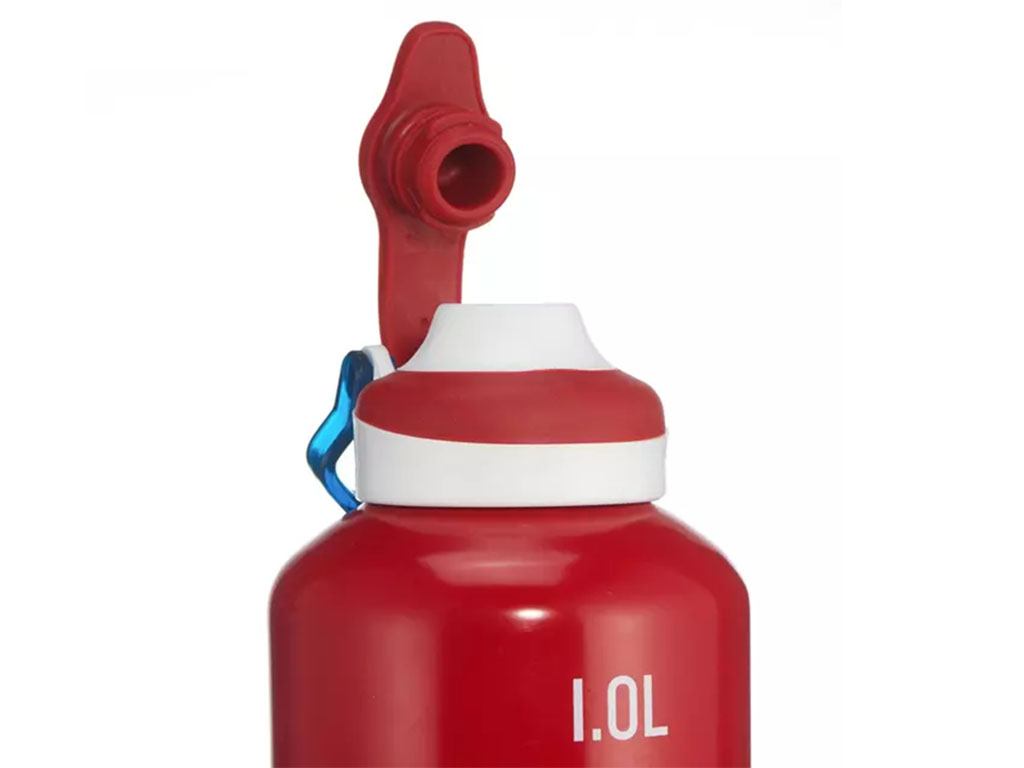
Filtering:
Some models are capable of filtering clear water, eliminating 99.9% of bacteria and protozoa. Like the decathlon forclaz model.
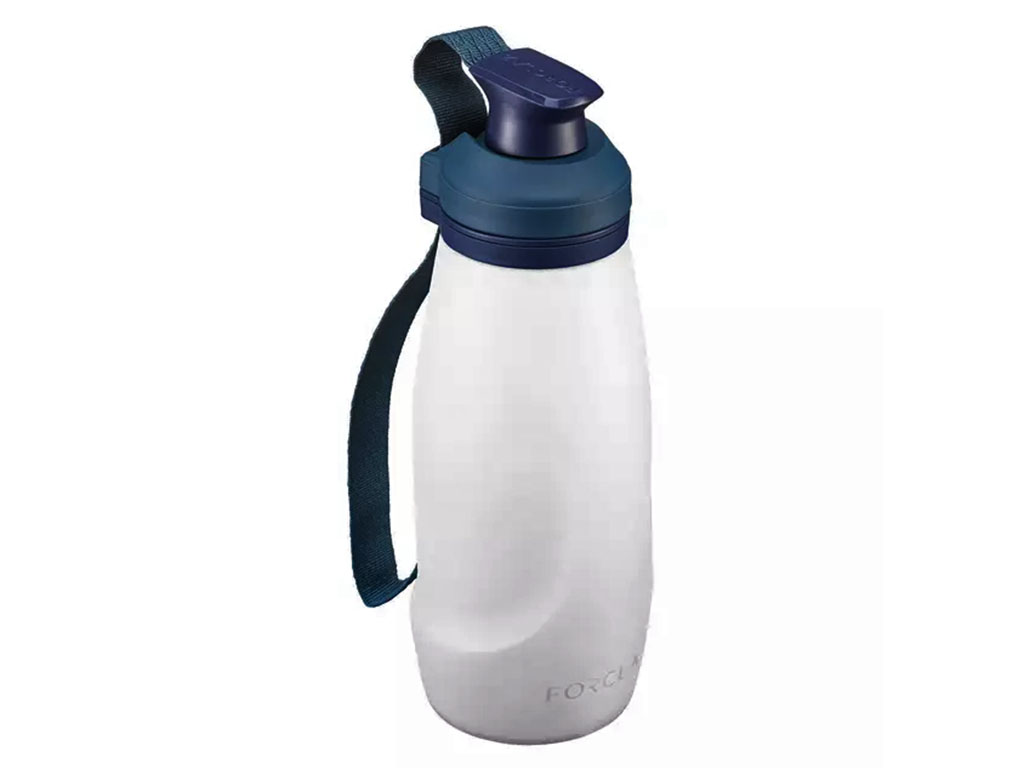
Capacity:
Standard sizes typically range from 0.5 litres to 1.5 litres.
Type of material
We had left this point to the end as it is the most extensive of all. We said that they are usually of three types: plastic (various types), aluminium or steel.
Plastic:
Although the solution to the single-use plastic problem is not reusable plastic, we cannot ignore the fact that it is a fantastic material: cheap, light, transparent, safe*, resistant, hard or very flexible, recyclable*, reusable* and, depending on the type, it does not alter the taste or smell of food.
According to the classification of the Society for Plastic Industry, which divides plastics into 7 categories, plastics for the manufacture of water bottles, canteens, food packaging, etc., are mainly of classes 1, 2, 4, 5 and 7.
- 1. polyethylene terephthalate (PET)The most commonly found in most single-use water bottles. It is very transparent and is one of the easiest to recycle.
- (2) High density polyethylene (HDPE)is the one found in the hardest bottles, such as milk or cleaning products.
- 4) Low density polyethylene (LDPE)We find it in the softest bottles, bags, etc.
- 5) Polypropylene (PP)The one with the plugs.
- 7) OtherThis class includes all those that do not fall into classes 1-6. They have the disadvantage that among such a variety, they are rarely recycled as their composition is unknown. However, if you look at the market for trekking bottles, you will find many reusable Tritan bottles (commercial name). This type of plastic is relatively easy to recycle in practice (we do not know if in reality) and less polluting than other plastics such as PVC.
We can tell the type of plastic a container is made of by the familiar recycling triangle symbol with its number inside.
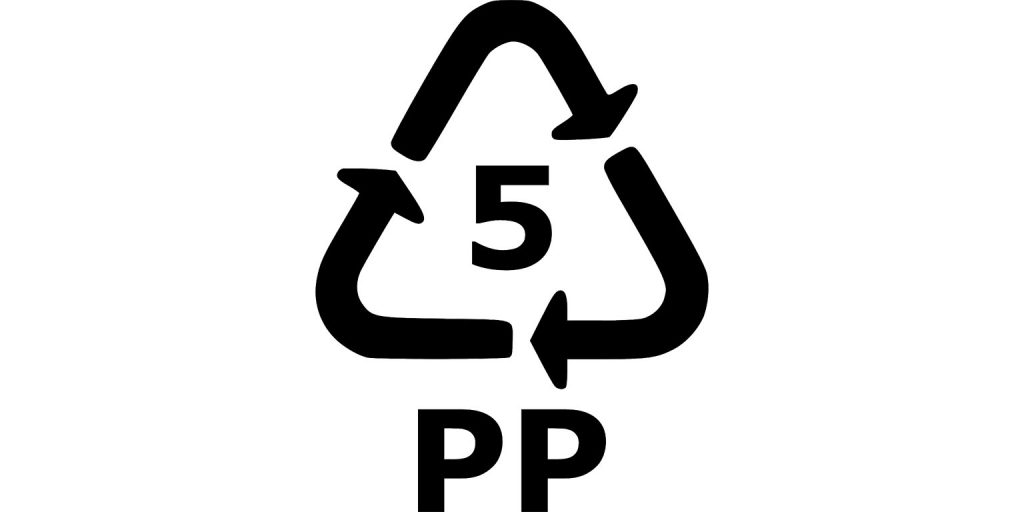
Some examples of bottles made of plastic are:
Reusable tritan bottle (class 7), BPA free, with filter on top.
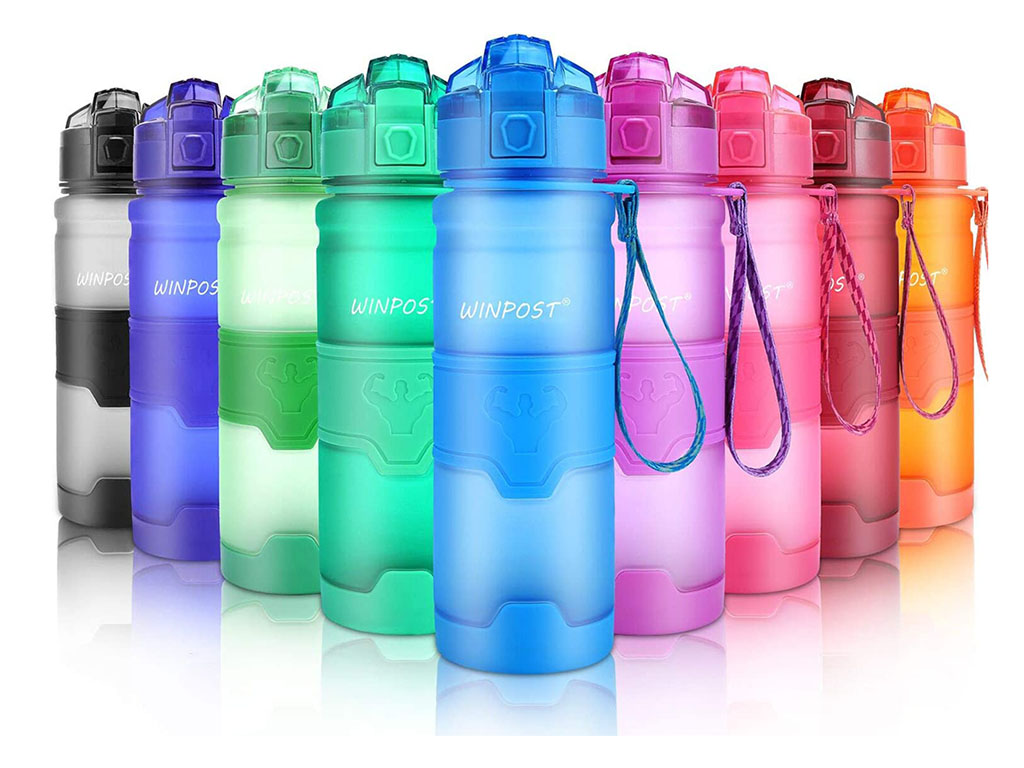
Soft, collapsible, BPA free water bottle.
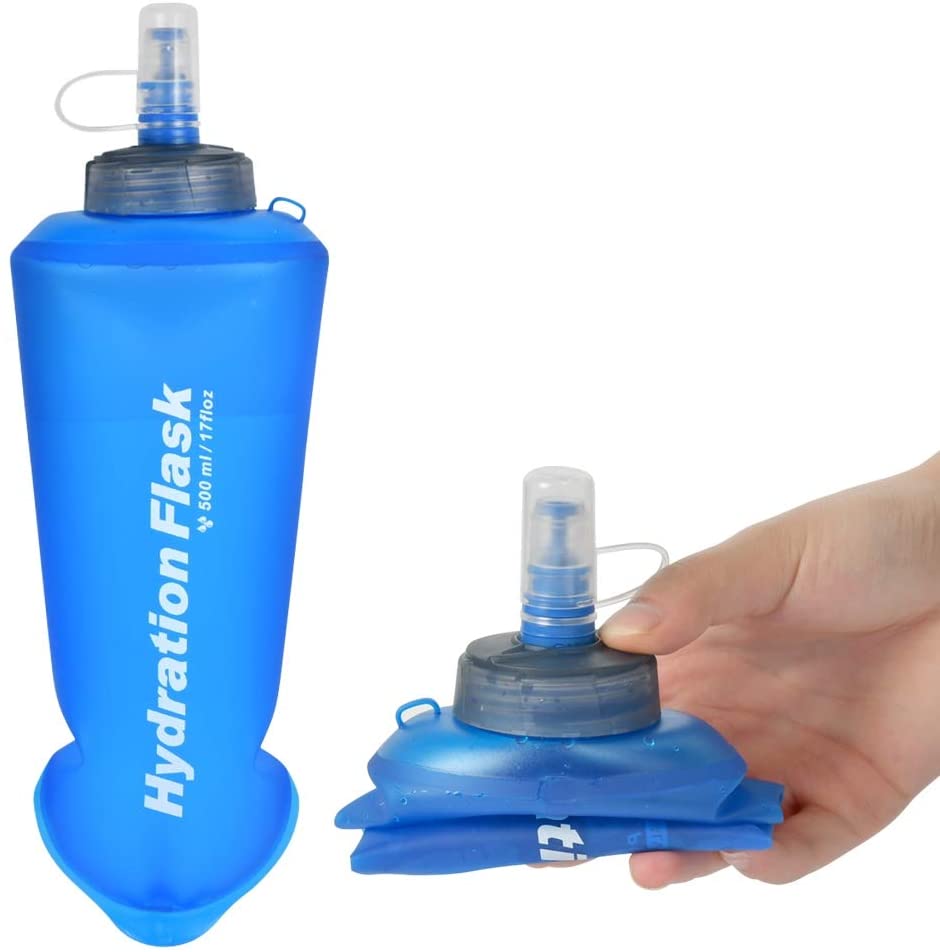
Aluminium:
Aluminium is a reusable, lightweight and 100% recyclable material if done properly. This is not to say that they have no environmental impact, the manufacturing process is more polluting than plastic, although it pays off in the long run.
When choosing an aluminium bottle, it is important to ensure that the inside is protected by a polyamide-imide based varnish that makes it completely safe for food use. This varnish will prevent the possible transfer of aluminium to the liquid.
1.5-litre aluminium bottle with polyamide imide coating.

Stainless steel:
They are heavier than aluminium bottles and also more expensive, but they are high quality. They are reusable and recyclable, tasteless, dishwasher safe*, do not sweat, are suitable for hot and citrus drinks and are a healthy option. We often find these bottles in thermos flasks.
Thermal bottle with double vacuum wall. Suitable for hot and cold drinks.
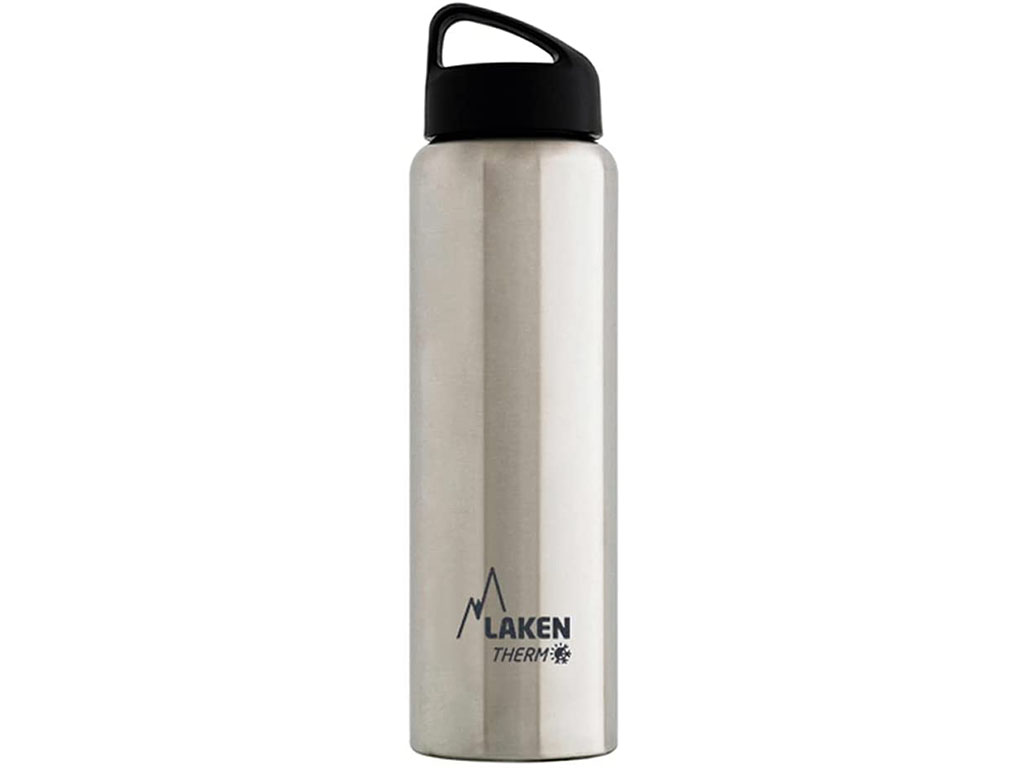
Camelbak bag:
A well-known alternative to the water bottle is the camelbak bag. The perfect option to stay hydrated at all times without the need to stop and take off your backpack. Ideal for trail running. Being a flexible bag, it moulds perfectly to the back, avoiding the annoying wobble that bottles have when we run. It has the disadvantage that the water ends up tasting like "plastic" and you don't know how much you have left.
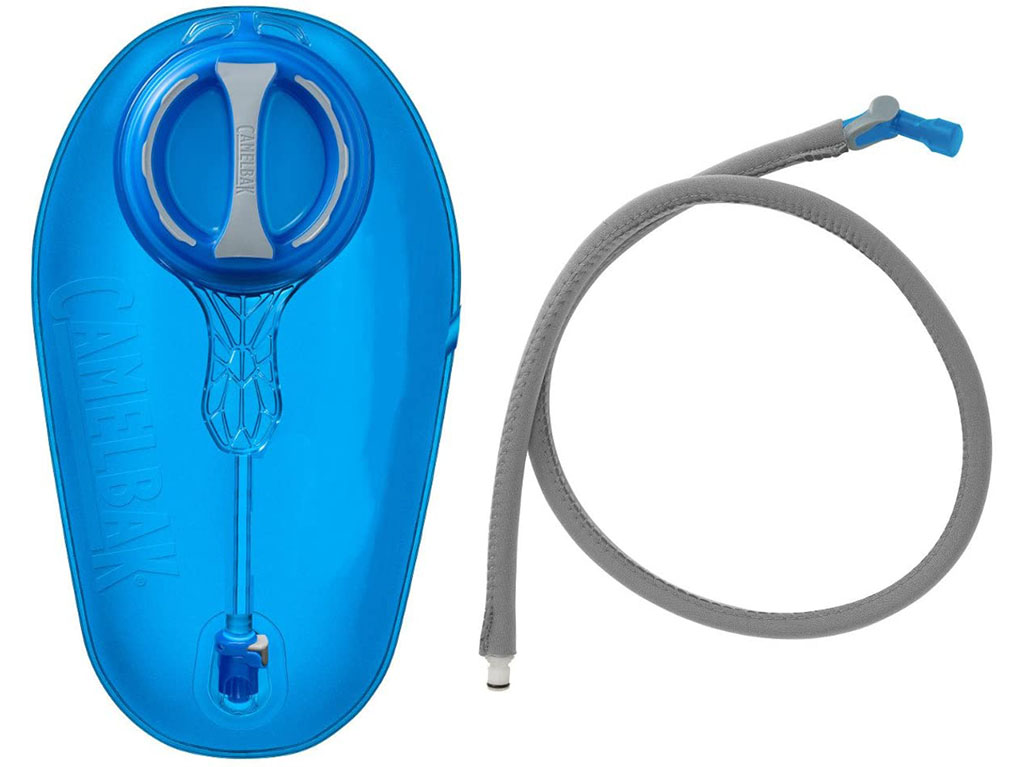
Don't miss any adventure in the Pyrenees!
